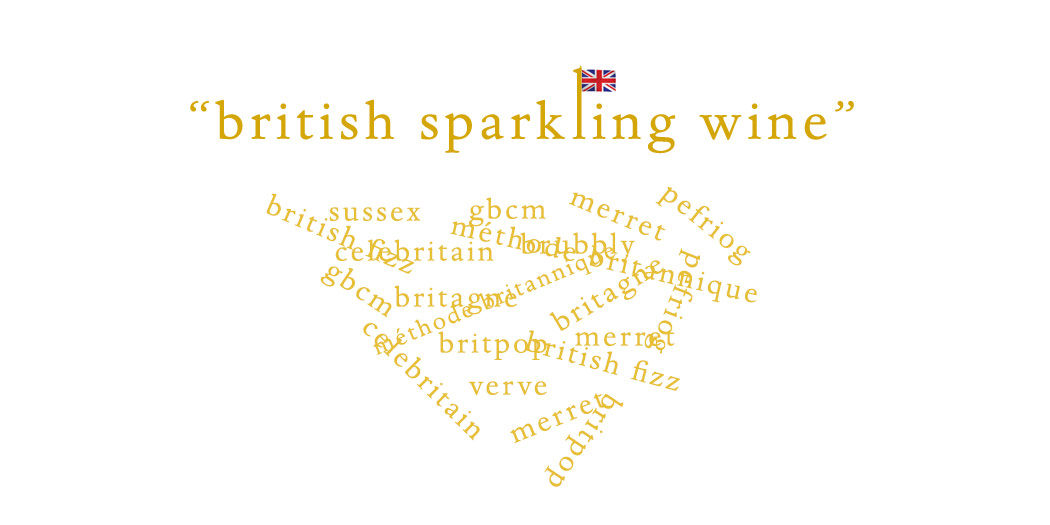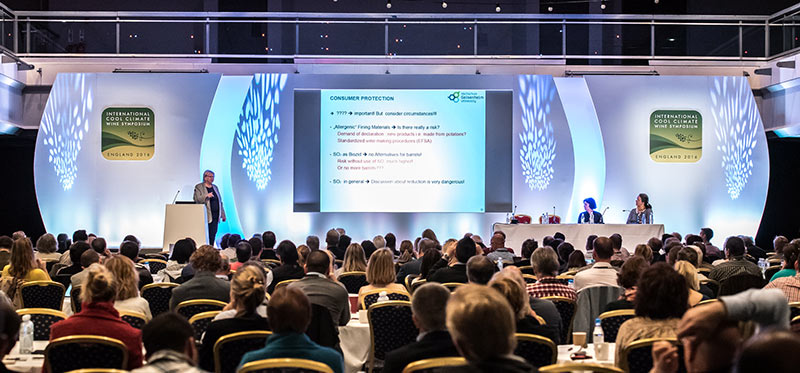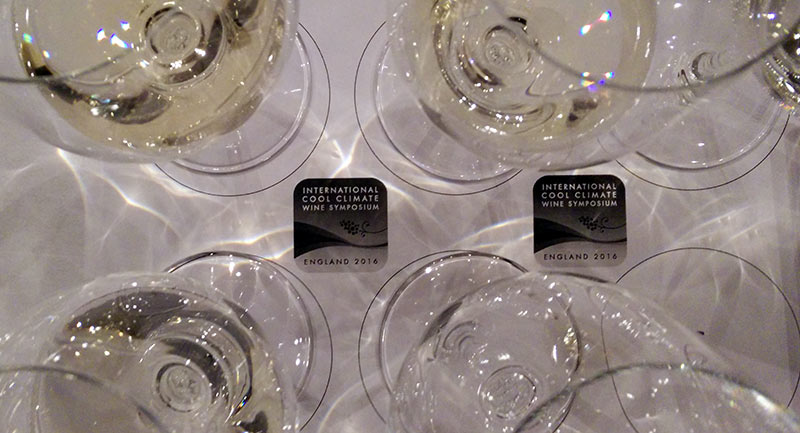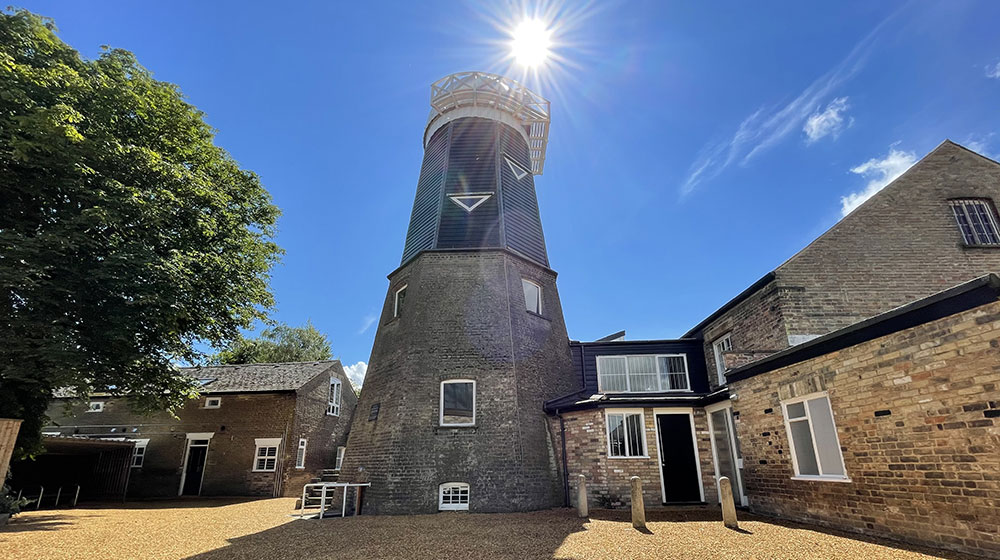Given the recent Coronation, it only seemed fitting to take a look at one of the long-unresolved issues for the wines of Great Britain…
In the last twenty years, British sparkling wine (or its longer, English & Welsh sparkling wine) has gone from a curiosity for wine people in-the-know to a growing industry of at least 270 wineries whose wines are drunk at large. The quality level has in fact risen to such a point that even the English are saying it’s good.
Throughout its existence, one thing hasn’t changed though, and that’s the question of what on earth to call it.
From the uncomfortably Francophilic (“Méthode Britannique”) to the downright silly (“Celebritain”), most of the proposed generic names for British sparkling wine haven’t seen much use in the wine industry, nor have they caught on with the general public. Though the blandly descriptive “English Sparkling Wine” seems to be the term most widely used by winemakers and the press, it’s been criticized as “too literal,” “bland,” and “pedestrian,” not to mention exclusive of the budding category of Welsh sparkling wines.
The effort by some winemakers to create a single brand for British sparkling wine has prompted debates about whether such a brand should exist in the first place, and if so, what wines it should include? Should proposed generic terms focus on individual counties? England as a whole? England and Wales? Just traditional method sparkling wines? Or all of them regardless of method? And would having a unified category help solidify British sparkling wine’s identity as a quality product, or drag quality producers down with cheaper ones?
It’s tempting to write off the naming debate as industry infighting or an effort by journalists to drum up novelty headlines [ed. including this publication of half a decade ago]. But though there’s still little consensus on naming conventions, we can learn a lot about the state of British sparkling winemaking—with producers variously looking to distinguish themselves from competitors, create region-wide quality standards, connect their wines to British culture and tradition, or establish a familiar profile wine drinkers can recognize—by looking at which terms have stuck around and which haven’t.
I hunted down generic terms for British sparkling wines that have seen some level of adoption in the wine industry and spoke to British winemakers about them. The number of proposed names are far too many (and most far too irrelevant) to list, so I’m limiting the roster to names that have been put forth by trade associations, appeared on wine bottles, or generated substantial press. We’re probably not going to see Verve, Brubbly, or BritPop on shelves anytime soon, so it’s probably best to move on from that group.
British Fizz
Though the U.K. Vineyard Association (now part of the British wine industry association WineGB) applied for PGI status on the term in 2017 just prior to Brexit, the association seems to have abandoned the effort, and the term is now absent from WineGB’s public-facing materials. While the phrase has appeared in the Telegraph and the Washington Post, among other newspapers, the vast majority of its use in the press appears to be informal–that is, with a lowercase F–and probably intended to avoid the headline-elongating “English (or British) Sparkling Wine.”
Merret
Proposed by the late Mike Roberts of Ridgeview Estate in the early 2000s, this term references Christopher Merret, a 17th century English physician and glassmaker who described the practice of adding sugar to wine to produce a second fermentation in England well before its 19th century adoption in Champagne. Though Roberts had originally hoped for “Merret” to become a generic term for English sparkling wine (and it was included on some Ridgeview bottles) it never caught on with other producers, and Ridgeview eventually stopped using it on their labels.
Reached for comment, a Ridgeview representative stated that the change was intended to avoid confusing their branding: “We redesigned our labels in 2018 [and] deliberately left off the word ‘Merret’ as we felt it was confusing with too many names related to Ridgeview and we wanted Ridgeview to be the strongest brand. [I]f we did want to develop ‘Merret’ as a generic brand for English sparkling wine it [would need] to be more generic and not so tied to Ridgeview. Ridgeview still retains the naming copyright to the word ‘Merret’ and would be open to industry conversations if it was decided that this was a name that the industry was keen to adopt.”
Britagne
Hampshire sparkling wine producer Coates & Seely coined this term (which is apparently pronounced, “Brittania”) when they released their first wines in 2011, though the winemakers state that they’ve never explicitly called for the word to be used as a generic term. Thus far, it hasn’t seen use by anyone but its originators, who have since stopped printing the term on their bottles. During its short lifetime, the term seems to have garnered some of the same criticisms county-wide PDOs have, with Cornish winemaker Bob Lindo of Camel Valley commenting in Decanter that his winery has “spent 20 years getting to where we are today, and we wouldn’t want to be lumped together with wines of varying quality.”
Pefriog
Andy Mounsey, chairman of the regional WineGB affiliate Welsh Vineyard Association and the owner of Velfrey Vineyard, proposed this term in 2022 as a name for Welsh sparkling wine. Pronounced “PEV-ree-og,” it’s the Welsh word for “sparkling.” Via email, Mounsey reports that while the use of the word Pefriog “is not yet set in tablets of stone,” it appears to be the leading term among Welsh wine producers; others suggested have been “Seren (star), Swigod (bubbles), Eferw (effervescent), and Sisial (whisper).” The aim, according to Mounsey, is to choose a Welsh word that is “genuine and apt,” has some connection to sparkling wine, and is easy for non-Welsh speakers to pronounce. [Ed. Similar issues abound for Croatian sparkling which is ‘pjenušac’.]
The term has appeared on bottles from producers Ancre Hill Estates and Gwinllan Conwy thus far, and Velfrey plans to begin using it on its 2020 Cuvée Reserve due to be released this year. Asked about the possibility of proposing a PGI/PDO for Pefriog, Mounsey says that this would likely be done through the Drinks Cluster, the alcoholic beverages subdivision of the Welsh government’s Cluster Program aimed at supporting domestic industry growth. Another option would be to protect the term by registering it as a trademark. Either way, Mounsey said, the term would almost certainly come with agreed-upon standards of quality and provenance, such as production method, bottle aging, and minimum quantity of Welsh grapes used.
Sussex and PDOs
Formally recognized in 2022, the much-debated Sussex sparkling wine PDO is the first British wine GI created since Brexit, though it’s currently only recognized by the U.K. and has not yet been registered with the EU’s now-separate GI system. Among other quality requirements, the wines must be hand-harvested, made using the traditional method, and approved by a tasting panel.
While both England and Wales have their own still and sparkling wine PDOs—and while a tiny vineyard owned by Camel Valley Vineyard in Cornwall known as Darnibole also sports PDO status—none of these generated much controversy at the time they were granted. However, Sussex in particular seems to have ruffled feathers.
The controversy over Sussex’s PDO concerns the exclusion of neighboring areas with near-identical soils and climates, such as Surrey, Kent, and Hampshire, where local winemakers have scoffed at the idea that Sussex’s sparkling wines hold unique qualities. Even the PDO’s proponents are hard-pressed to say what distinguishes Sussex’s products from those of neighboring regions where sparkling wine is grown in southern England. And unlike many wine GIs, the boundaries of the PDO are the political boundaries of the county, not those between its quality winegrowing area and its less ideal sites. This means that any winegrower in the region, regardless of site quality, is still considered “Sussex” as far as the PDO goes.
Reached by email, Mark Driver—who owns Sussex sparkling wine producer Rathfinny Estate and was one of the major forces in getting the PDO ratified—says that the idea of a South Downs PDO was floated, but because as the South Downs “is now a demarcated area […] it would have excluded more winemakers than the Sussex PDO.”
Asked about the political boundary of Sussex potentially including lesser-quality sites, Driver evokes Champagne, which, he points out, “is a whole region as well, as is Burgundy”; he believes that it’s “nonsense that we must make it narrow to just include the chalky south downs, when people are making very good wines on the sandstone to the north of the south downs and even on the clay of the weald.” He believes that the PDO’s tasting panel will work well enough to exclude wines of poor quality.
On the difference between Sussex and neighboring counties, Driver says it’s less about the specifics of Sussex’s soil or climate and more about “rais[ing] winemaking standards” and “giving provenance and ensuring quality, by a set of winemaking rules […] Obviously, you can grow grapes on similar soil and in a similar climate in neighbouring Hampshire, but they’re not grown in Sussex. Much like you can grow grapes in Picardy, neighbouring Champagne, but they can’t be called Champagne.” (Note: this is not quite true, as some communes of Picardy are part of the Champagne production zone, which somewhat fuzzes Driver’s point about provenance versus site quality.)
The logic here might seem a bit odd to wine drinkers used to idea of a GI as a delineation of terroir. You might ask, as many commentators have, what the point of naming a site might be if its products aren’t distinct and if the named area isn’t restricted to quality sites.
The disagreement seems to come down to what you believe PDOs are for. The winemakers unhappy about the Sussex PDO seem unanimous in their belief that regional GIs should be granted to set aside areas of particular distinction—and, crucially, to exclude those that don’t fit the bill. On the other hand, those who pushed for the Sussex PDO feel that terroir is beside the point, and that the legal process of obtaining a PDO is more of a tool to ensure an internal standard of quality wine production and to safeguard the Sussex name.
While it’s expected that the Sussex winemakers who pushed for the PDO’s creation will feature it prominently on their labels, not every sparkling wine producer is optimistic about GIs in general, Sussex or otherwise. Winemaker Frazer Thompson of Chapel Down, which owns land in Kent, Sussex, and Essex, said in an interview with Drinks Retailing that he believes regional PDOs can lead to a product category that is “only as good as the weakest, cheapest link”—that is, a generic term vulnerable to being tarnished by low-quality winemaking, which Thompson feels has happened to PDOs like Prosecco, and even more so in the case of Cava, which has been working to build back its reputation after years of racing to the bottom shelf.
Reached by email, renowned English wine expert and Master of Wine Stephen Skelton makes a similar point: “All quality schemes are marketing schemes at their heart and whilst they may have their origins in wanting to preserve the characteristics of wines coming from a certain geographical region, the practicalities are that they have to have rules, and geography is usually the best way to define them as [there] can be no arguments. […] There are exceptions to this, where quality schemes are based on a defined wine style, usually by a combination of provenance, grape varieties, and growing and winemaking techniques, but these tend not to perform very well, and do little to raise prestige, and therefore prices, for the growers and producers—arguably the only reason to have quality schemes. […] As a prime example, [what] has Cava ever done for the prestige of Spanish traditional method sparkling wine? Most people don’t know that it’s traditional method wine or is a multi-region product, and that’s after many decades of being used.”
In other words, the Sussex PDO may end up accomplishing the opposite of its original intent of raising the regional profile in the eyes of the wine drinking public. It may be too early to tell whether the PDO’s detractors are correct, but it’ll be interesting to see which producers adopt the PDO’s name in their marketing, how the PDO affects the public’s impression of the region’s sparkling wine offerings, and whether other counties follow suit.
Great British Classic Method
This term and its associated emblem was unveiled in 2020 as part of a campaign by WineGB to differentiate high-quality traditional method sparkling wine made with grapes grown in Great Britain from those produced using other methods, or made with non-British grapes. It’s one of the few terms on this list that has seen wide use with wine producers, with Squerryes, Simpsons, Chet Valley Vineyard, Southcott, Busi-Jacobsohn, Albury, and a’Beckett’s all using the term in their marketing materials or labels for at least one wine.
While there’s ample room a for a name that encompasses all British sparkling wine—and while many producers seem enthusiastic about defining their own region’s brand—“Great British Classic Method” has several appealing factors as a generic for the entire region. Unlike “English Sparkling Wine,” it’s inclusive of Wales (and potentially Scotland someday). Like Champagne and other quality sparkling wine regions, it comes with quality standards, preventing at least the cheapest wines from undercutting their quality competitors; however, it also allows for a broad range of styles. The words are all easy to pronounce and in English, which seems like a prerequisite for the kind of proudly British marketing its producers seem to be aiming at. It also acknowledges the contributions of Brits to the development of sparkling winemaking.
Finally, it manages to pass that key test of not sounding stupid. Celebritain, eat your heart out.
One possible criticism of the term is its four-word clunkiness. However, wine drinkers have always been adept at coming up with shorthand for names they can’t or don’t want to pronounce, so perhaps it’ll eventually get shortened to “GBCM” or even “gee-bee” in the same way that Châteauneuf-du-Pape has become “CDP” and Trockenbeerenauslese “TBA” on the tongues of impatient English speakers.
Whatever the priorities of the wine industry, the rapid growth of British sparkling wine likely means that drinkers will eventually land on a name even if winemakers can’t agree on one. So if the public ends up picking a tongue-twister like “Eferw” or “Bubbleigh,” let’s at least hope it gets shortened to “Ef” or “Bub.”




Great article. Spot on and very topical given the ongoing PDO consultation by Wine GB
I’m glad that Andrew digged into this as it’s confounded me for the longest time and he came up with the same end result. Don’t know how this will ever be resolved.
Bonjour! very interesting article, thank you. Just one mistake to correct, it’s not ALL lands within the historical Champagne region that can produce grapes and get the Champagne Appellation, it’only a very small portion, defined village by village, parcell by parcell.. Exactly the same in Bourgogne. If your land isnt on the map, it cannot produce Champagne or Bourgogne as the concept of AOP (or GI++) implies.
For Champagne there are many other rules that come into consideration : grape varieties, pruning / growing methods, 2nd vinification in the bottle / minimum ageing time etc….
Best wishes to our friends producers of GBCM ! Alone one goes faster, together we go farer…
Bruno Paillard, Reims
Hi there Bruno,
Yeah, I think he was just speaking in broad, simplistic terms as the map of Champagne is very, very detailed.
Love your wines by the way!
Yes, it was a quote from Driver, and I’m not sure it makes exactly the point he was trying to make—since, as we know, Champagne’s growing region is delineated by its quality sites, not its political boundaries! Although it’s possible that Driver was more trying to say something like “Champagne has better and worse sites” or “Champagne has sites with different terroir.”
Sparkling wines from California, Tasmania, New Zealand, Argentina and probably many other regions/countries seem to manage without a special name, whereas some wines that do have unique monikers – think Satèn, Topaque, Meritage, Cap Classique – hardly any non-wine trade person has heard of them. English (and Welsh, and maybe Scottish and Northern Irish) Sparkling Wine will have to do.
Indeed, good points.
I would counter that as a native Californian who started out in that wine industry, the term “Champagne” has done a lot of illicit heavy lifting for the sparkling wines. But, if one talks about the wines, it’s usually in terms of the brand names so Gloria Ferrer or Scharffenberger. Few people talk about the segment as a whole unless to say, “Sparkling wines from California”.
I feel it’s the same for other countries where I’d never ask for a “Tasmanian sparkling wine” but more Jansz.
Thus the brand identity is shifted on to individual producers instead of the region as a whole which seems to me to be a lot of duplicated work. You also end up with destructive energy as producers compete with each other instead of building their region together like one seems in Champagne.
At least, this is my viewpoint having seen how this plays out in California and now in Spain where there are weak DO bodies but good wines being produced.
My propose is simply SPARKLISH or SPARKLISH CLASSIC or SPARKLISH WINE
I undestand all diffuculties reaching an all
inclusive name. I suggest Uk Classic Method. Why not?)(